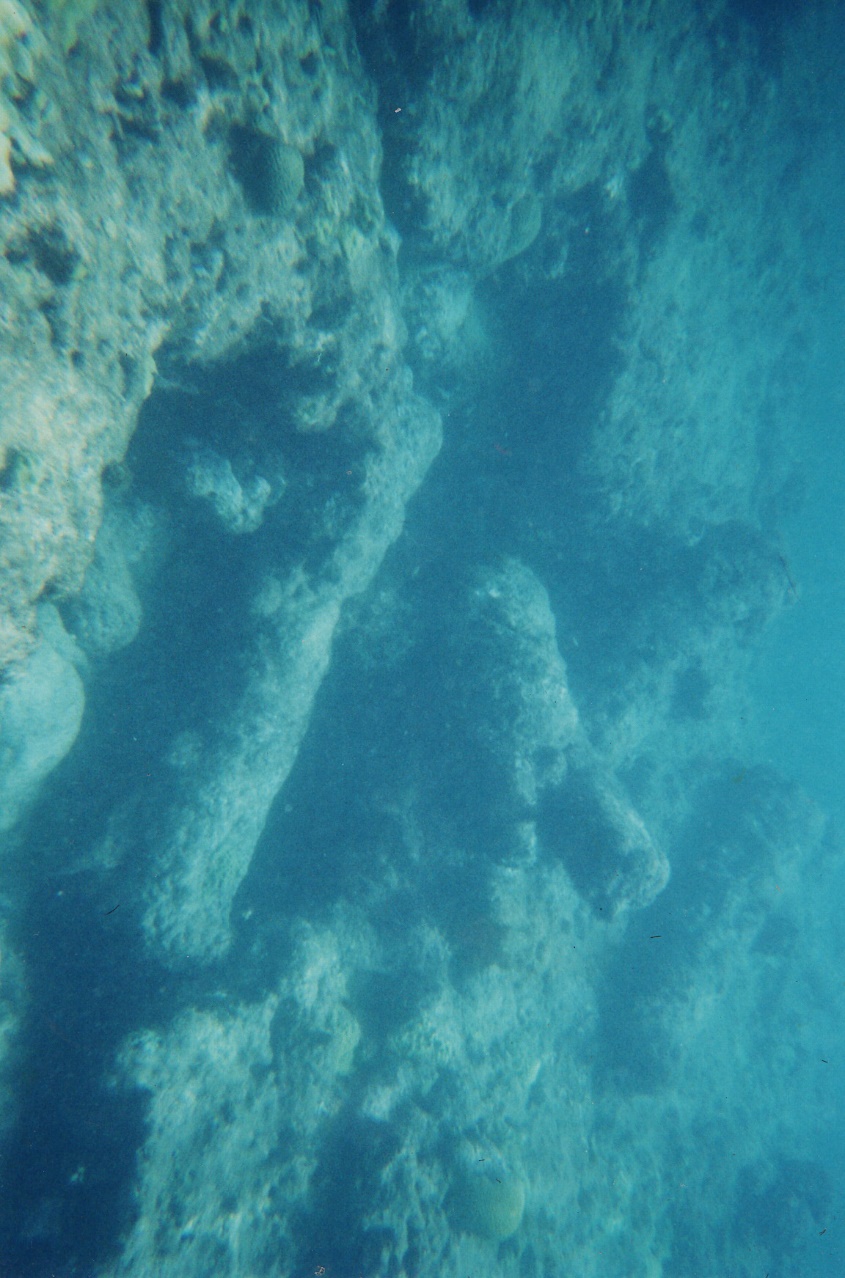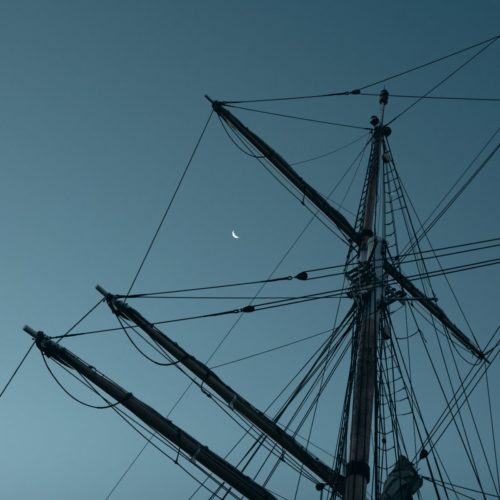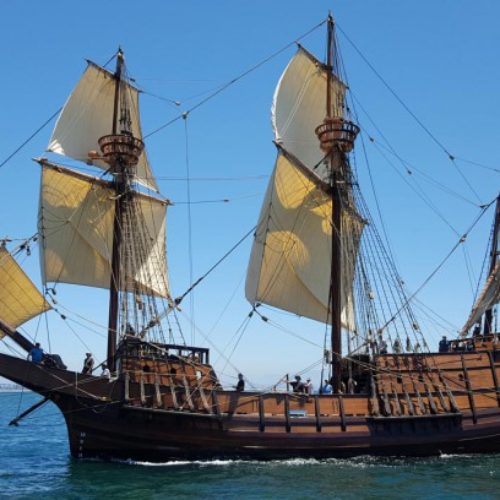From the Calendar of State Papers, 1717:
“John Martel, with a sloop of 8 guns, began pirating after operating as a privateer in the War of Spanish Succession, cruising mostly in the Mona Passage between Puerto Rico and Hispaniola. He took several prizes, including the John and Martha, Captain Wilson, with 20 guns, loaded with lumber. The top deck was dismantled, two more guns added, and Martel’s mate, Kennedy, given the sloop.”
Jean Martel, the eldest son of Buccaneer Charles Martel, was raised on Sainte Croix where the Buccaneer Hotel now stands. Jean and his little brother, Phillip, went to sea with their dad when they were twelve years old, and the boys were present at the sacking of Cartegena. Jean became a privateer captain, sailing the 8-gun sloop Renown in the War of Spanish Succession. During the war, he operated out of Jamaica. He spoke excellent English, and got intel by hanging out in harborside bars with sailors where he learned which ships sailed, and when. Jean was French; he chased the English ships down. With peace declared, Jean and his crew continued as pirates. They sailed out of Petit Goâve where the Martel family had settled after Sainte Croix was abandoned, cruising mostly in the Mona Passage between Hispaniola and Puerto Rico.
Martel captured two 20-gun ships and several sloops in the Mona Passage in August of 1716. The first was the lumber ship John and Martha, which he converted to be the flagship. A contemporary book, A General History of the Robberies and Murders of the Most Norotious Pirates, by Captain “Johnson” says:
“They concluded now, that ’twas high Time to get into Harbour and refit, as well as to get Refreshments themselves, and wait an Opportunity to dispose of their Cargo; therefore ’twas resolved to make the best of their Way to Santa Crux, a small Island in the Latitude of 18, 30, N. ten Mile long, and two broad, lying South-East of Porto Rico, belonging to the French Settlements. Here they thought they might lye privately enough for some Time, and fit themselves for further Mischief. They met with a Sloop by the Way, which they took along with them, and in the Beginning of the Year 1716-17, they arrived at their Port, having a Ship of 20 Guns, a Sloop of eight, and three Prizes, viz. another Ship of 20 Guns, a Sloop of four Guns, and another Sloop last taken; with this little Fleet, they got into a small Harbour, or Road, the N. W. Part of the Island, and warp’d up two Creeks, which were made by a little Island lying within the Bay; They had here bare 16 Foot Water, at the deepest, and but 13 or 14, at the shallowest, and nothing but Rocks and Sands without, which secured them from Wind and Sea, and likewise from any considerable Force coming against them.
When they had all got in, the first Thing they had to do, was to Guard themselves in the best Manner they could; they made a Battery of four Guns upon the Island, and another Battery of two Guns on the North Point of the Road, and warp’d in one of the Sloops with eight Guns, at the Mouth of the Channel, to hinder any Vessels from coming in; when this was done they went to Work on their Ship, unrigging, and unloading, in order to Clean, where I shall leave them a while, till I bring other Company to ’em. (Johnson) (also Calendar of State Papers, 1716).
They careened the John and Martha and the Renown and began transferring loot off of the two captured sloops and the second 20-gun ship they had brought with them. ‘Johnson’ says that this loot included 1000 pounds in silver, 20 African captives, sugar, molasses, and bolts of cloth. They had taken a ship loaded with Africans and ivory, but ‘Johnson’ says that they ‘let the elephant’s teeth go’ when Martel allowed captured sailors to take a small prize sloop and sail home to Boston (probably why the crew voted him out as Captain shortly afterward). According to “Johnson”, one-third of Martel’s gang was white, one-third were mulatto, and one-third were black. It was a different age; The captives chained below had been sold into slavery by Africans, and to Martel’s crew, they were plunder. The John and Martha was pressed into the larger, southerly of two ‘creeks’ that form a small mangrove island on the west side of the bay (the sea wall of the marina, now), and their original 8-gun sloop, Renown, on the Northern side (by what is now Gold Coast Yachts) (Johnson).
Signs of a dangerous weather system appeared, as Bellamy and La Bouse arrived in Salt River Bay shortly after (Johnson).
On arriving in St. Croix, ‘Johnson’ says that the Martel (now commanded by Kennedy) gang put two cannons on the Northeastern side of the harbor (Judith’s Fancy point, now part of Salt River National Park), and four on the Western side (de Ruyter’s and Henry Morgan’s old earthen fort, also part of the park.
Just north of St. Croix, Bellamy and LaBouse had taken some prizes on the way into Salt River. Their crew was looking forward to a good time. The pirates were on St. Croix, a French island, ‘a malaria island’ which naval ships were afraid of; it was hurricane season; and the pirates were a force to be reckoned with. ‘Johnson’ says that the party and debauchery were epic. The pirates did not expect molestation from the British Navy, and while hurricane season was in full swing, they were correct in their assumption. At some point, Bellamy realized they had made a mistake.
According to ‘Johnson’, Captain Hume of the British frigate Scarborough, 32 guns, was sent from her base in Barbados at the request of Governor William Hamilton, who had reports of a couple of pirate sloops that had taken the Bonetta and several other ships. Many pirates were operating in the Lesser Antilles at this time, and many ships were captured. Bellamy learned too late that John King’s mother was related to (probably a niece) Governor Hamilton, and he expected trouble to come; he and LaBouse took off down island. If he shared his fear with Martel, it was ignored.
The Scarborough put into Spanish Town, Virgin Gorda, just as a boat arrived from St. Croix, probably one of the small sloops bringing stolen cargo to sell. Over a tot of rum, a sailor from the boat told a member of the Scarborough’s crew about the pirates in St. Croix, and Hume was informed. The Scarborough recalled her crew and left immediately, arriving off of Salt River Bay at dawn.
The Scarborough anchored in Easterly winds and fell back parallel to the reef. Her log book notes one navigable channel into the bay that was too shallow for her to enter.
HMS Scarborough systematically destroyed batteries of cannons the pirates had placed on each side of the harbor entrance and sunk the sloop (Renown is still there, but, so close to the beach, her cannons have long since been looted and used as lawn ornaments. Her pile of ballast stones—water-smoothed river rock–mark where she sank). Bonetta next began cannonading the John and Martha “Through the mangrove island.” The mangroves would have absorbed most of the shot, but more and more would have begun making it through. With the evening calm, the wind died away, and the Scarborough began swinging into the reef. Captain Hume weighed anchor and stood off and on for a few days, blockading the harbor. ‘Johnson’ continues,
“On the 20th, in the evening, they observed the man of war standing off to sea, and took the opportunity to warp out, in order to slip away from the island; but at 12:00 they ran aground, and seeing the Scarborough stand in again, as their case was so desperate, so they were put into the utmost confusion; they quitted their ship, and set fire to her, with 20 negroes in her, shackled in the hold, who were all burnt; 19 of the pyrates made their escape with Kennedy (and Martel) in a small sloop, but the rest, 20 of them being negroes, betook the woods, where ’twas probable they might starve, for we never heard what became of them afterwards: Captain Hume released the prisoners on the ships that remained, and then went after the two sloops he had been sent after in the first place. (Bellamy and LaBouse, to ‘rescue’ young John).” (Johnson) (CSP 1716, #204, #351, Gov. Lowther).”
The John and Martha hit Black Rock on the western tip of White Horse Reef at midnight. Until recently, her three anchors and her chain still led to the northwest, placed there in the futile hope of kedging her off. Blackbeard found her there two weeks later and floated a barge over to the wreck, taking twelve six-pounder cannons for the Queen Anne’s Revenge. Bellamy returned, looted Virgin Gorda in retaliation, and took on most of Martel’s crew. Bellamy continued to operate out of Saint Croix for a few more months, then sailed north where he met the Whydah, and his destiny. LaBouse stayed even longer, but eventually sailed away to meet his fate in the Pacific Ocean.
“Christmas Winds”–strong north-east trades pushing big swells—shoved the wreck of the John and Martha to where it rests today, on the eastern side of the reef just offshore from Estate Judith’s Fancy.



